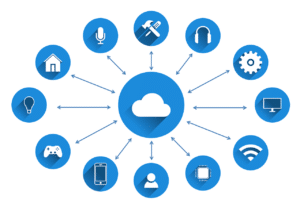Automation: 3 ways it boosts productivity and reduces burnout
Image source: Pixabay
Reports of mass layoffs are all over the headlines these days. As of April 2023, job cuts rose to 270,416—an increase of 396% from the same period a year ago. The tech sector, in particular, has taken a bruising, with 102,391 jobs slashed this year so far, an increase of 38,487%.
The other side of the coin, which doesn’t always make the headlines, is the employees who manage to hold onto their positions. In addition to simmering anxiety about their careers, these employees have to grapple with significantly larger workloads. In the tech industry, for example, one report found that the number of weekend hours jumped to 11.5 hours on average—a 31 % increase.
As CEO of Jotform, I understand the stress of these turbulent times. But I’m also a fervent advocate for the power of rest. The only way to bridge these two realities is to increase productivity through automation. Using automated tools and systems, employees can get more done when they’re “on,” and fully disconnect when they’re “off.” Here’s a closer look at how automation serves both your employees’ and your company’s well-being.
1. Automation boosts productivity
In Aytekin Tank‘s new book, he writes at length about the perils of busywork—manual, rote, repetitive tasks that, while necessary, don’t supercharge motivation or leave us feeling fulfilled. We all have our own version of busywork, be it invoicing, scheduling, emailing, or any other activity that we tend to complete on overdrive.
The truth is, doing things manually takes time, especially when you consider the various human pitfalls like distraction, boredom, and sheer forgetfulness. We’ve all been there—you decide to reply to a few quick emails before turning to a cognitively demanding task, and suddenly an hour disappears and you’re too mentally fatigued to tackle your more important work.
With automation tools—for example, automatically filing emails, saving spreadsheets, or organizing a meeting calendar—tasks that normally take minutes (or hours) are reliably completed in seconds or even milliseconds. We’re left with more uninterrupted time to take care of the big stuff.
Identify your version of busywork, break it down into steps, and find the best tools out there to take care of the rote, repetitive parts of the sequence.
2. The more automation, the more engagement
Busywork isn’t just a productivity killer. When it chips into our time for the big stuff, it destroys engagement too. And with the current economic turmoil leaving employees fearful for their jobs, engagement is both more precarious and precious than ever.
When we automate, we can carve out more time for the big stuff—and the more time we spend on the big stuff, the more engaged we become. Engaged employees aren’t just happier; they also create better customer experiences. Companies, in turn, can charge more for their services. The bottom line: Higher engagement is a win for everyone—companies, customers, and employees alike.
To identify your most meaningful work, ask yourself what you enjoy doing the most and what delivers the most impact. For me, that’s writing and high-level strategizing. As you are a journalist, it might be drafting compelling narratives. For a designer, it might be brainstorming creative and beautiful ways to solve a customer’s problem. As you work toward automating as many steps as possible, keep this “meaningful work” vision in mind. It will be a compass on your automation journey.
3. Top-down automation strengthens your business
The benefits of automation are multifold: It increases engagement and productivity; it overcomes human limitations like the need to rest because with automation you set it and forget it; it minimizes errors; and it establishes processes that can be consistently refined. This list is not exhaustive.
But here’s the rub: Automation can’t be established in a vacuum. A single employee can’t create a work environment that promotes automation. In order to truly harness the power of automation, automation strategies, and their associated protocols must come from the top down.
Consider the practice of blocking out time for deep work. When we automate, we can carve out these important time swaths and set our status to unavailable. But one employee can’t go off the radar without the cooperation of her colleagues. To successfully establish this kind of workplace norm, there must be mutual understanding and support from management.
As leaders, we can encourage employees to automate and to fully take advantage of the benefits that flow from automation. That way, everyone is on the same page.
When everyone in the company is giving themselves space to do their most meaningful work, balanced with ample time for rest, it creates a virtuous cycle. The work becomes its own reward—and might even feel lighter than ever.
To read the original article, click here.
